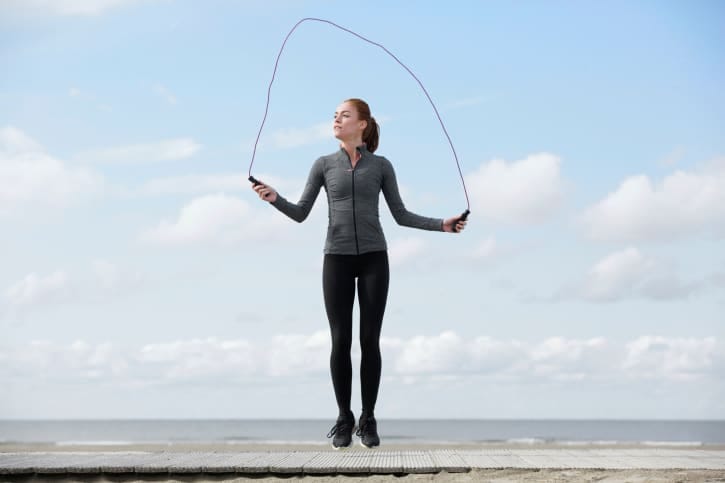
At times members, colleagues, and general fitness enthusiasts alike stumble across a new product and ask me for my take on it; the latest being the Smart Rope—”a high tech, new and improved jump rope empowered by LED technology and smart data.”
After watching this video, it does look like it could be a fun, new twist on jumping rope. Much like the fitbit, or some of the other new tech equipment, there is a novelty aspect to being able to link the information gathered from it to the phone or computer. It seems like the “it” thing to do. Not to say that this is bad by any means. If it helps get someone more active and provides a fun aspect to fitness, I’m all for it. And essentially that is what this product will hopefully do.
Being able to see your jump count in front of you in mid air is awesome and it will definitely get other people’s attention. Also, being able to track and record your progress, both in terms of number of jumps and calories burned, always helps people hold themselves accountable in their workouts which is key to success.
Now with this said, the product (as far as I can tell) isn’t yet for sale and is still in the development stage, so I’m a little leary of really giving a “yay” or “nay” on it because I don’t want to give the impression that I want people to go to Kickstarter and support it—that’s totally up to you. So, I would rather talk about the benefits of simply jumping rope instead!
Jumping rope is a great way to burn calories and strengthen the body overall.
By jumping rope, you are essentially performing a high-intensity, weight bearing, cardiovascular exercise that can be more effective than running with less impact on the joints when done properly. When performed improperly however, jumping rope can actually put more stress into the ankles, knees, and hips than running.
It is important to stay on the toes, while keeping the body tall, head up, and the muscles of the core engaged. When jumping, most novice jumpers will jump too high. As you get more practice and more comfortable, you really will only need to jump about an inch off of the floor.
Jumping rope is going to work the calves, hamstrings, and thighs due to the repetitive aspect of landing and pushing back up into the air on each jump. It is going to engage the core, along with strengthening the muscles of the shoulders, forearms, and hands with each revolution.
Finally, jumping rope is going to strengthen the heart and lungs because it is such an intense, aerobic exercise. However, there are some fundamental things to remember.
Because of the intense nature, you should always consult your physician before starting a jump rope program. Jumping rope is going to stress the central nervous system of the body, so it is important to warm-up first, and to then slowly build your stamina and duration. By taxing the central nervous system too quickly and not building up, you run the risk of fatiguing the muscles to the point where they may not be able to respond quickly enough when needed during another activity or exercise resulting in the risk of injury.
The best way of knowing when to stop is when you notice your speed slowing down. So, when jumping rope, when you keep getting caught by the rope, your muscles are no longer able to fire quickly enough to get back off the ground.
Lastly, because of the impact on the body that occurs during jumping, if you have foot, ankle, knee, hip, or back issues, I would definitely recommend consulting your doctor prior to starting.
So in all, adding a jump rope routine into your program once or twice a week is a great way of burning calories, challenging and strengthening your Central Nervous System, strengthening your heart and lungs, and a large amount of muscles in the body. But take your time and slowly build your stamina, maybe progressing from 1 minute, to 2, to 5, to 10, to 15, to 20 minutes over the course of 6-10 weeks.
Again, I think that the idea of having the tracking capability and mid air display make this already great “old school” exercise seem fun again!
Get your own personalized plan!Written by Luke Lewitzke, CPT, Personal Training Director at Elite Sports Club-Mequon